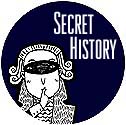 |  |

Some spectres from the dawn of the Electric Age
by Jack Neely
It was a new century, and here in the Queen City, life was full of new possibilities.
Everywhere you looked in 1902, it seemed as if there were more electric lights than there'd been just last night: in homes, in businesses, in the streets. Oliver King, Knoxville's premier riverman, had purchased a generator to illuminate his flagship, the Annabell King, with electric lights, even a searchlight, "so that business can be transacted at night as well as the daytime."
Even more amazing, for those who had 15 cents for a ticket, was Professor Morris' brand-new Electric Theater on the 400 block of Gay Street. There the professor showed "reproductions by electricity" of President McKinley's funeral parade. Another featured electric special effect was "Lunette, the Flying Woman." But the professor's most amazing show of all was a live exhibit: the "Statue Turning to Life," which was said to show "the slow blossoming of a living, beautiful woman from a marble statue." (To prove it was a statue to begin with, the professor removed its head.) The Journal called it "one of the most puzzling and interesting exhibitions ever seen in this city."
The chivalrous professor saved his best seats for women and children. But on his Electric Theater's opening night, he had some competition for the Queen City's attention. Just four blocks down Gay Street that same evening, at Staub's Theater, was a musical production with a cast of 50. Called The Governor's Son, it starred the 23-year-old prodigy who wrote the score, George M. Cohan. One of its popular songs was called "Nothing New Under the Sun."
Well, maybe—but this 20th century could still seem like a brave new world. Once in a while you'd even see a car driven by its own engine. But the 19th century wasn't quite over yet. The river was rising, threatening to flood, and a smallpox epidemic was ravaging Jefferson County, just like the old days.
And there were some bugs in 20th-Century technology. Our first electric streetcar had amazed us over a decade ago, carrying downtowners to Chilhowee Park and Cal Johnson's horse-racing track; it became known as the Race Track Flyer. But late one night that week, something went wrong with that maiden line. The Race Track Flyer broke through a switch and derailed at a high speed, plummeting off the bridge near town. Motorman James Porter, a veteran streetcar operator, died on the banks of First Creek. No one could understand what happened.
To get up to Fountain City in 1902, though, you didn't take an electric streetcar. You took an old-fashioned short steam-engine train called, for reasons forgotten, the Dummy. It ran the five miles through Sharp's Gap, then turned around and came back to city-limits Knoxville. There was a melancholy pall over Fountain City in 1902; it was not turning out to be the national tourist mecca promoters had promised, when they planned the grand hotel and heart-shaped pond almost 20 years ago.
Fountain City was turning out to be a pleasant place to live, no question. But if you were to take the Dummy up to Fountain City one weekday evening in 1902 and get off to look at the heart-shaped pond, you might have heard, from deep within the old Fountainhead Hotel up on the hillside, the sound of people screaming.
That would have been the resident students of Holbrook College. If you've never heard of Holbrook College, don't feel like a dope, and don't try to look it up in Barron's. It's been closed for about 95 years. All its buildings, including the old hotel, have been gone for most of the century.
Holbrook had opened with high hopes back in '93, during Fountain City's glory days. Holbrook was to be a teachers' college. It began strong with more than 100 students, but soon ran into financial troubles. It went out of business, then burned to the ground. But the Baptists took it over, rebuilt it as a sectarian college on a hillside overlooking this unincorporated "city" known for its pond and its freedom from the evil of saloons. Holbrook was built just above and behind the older Fountainhead Hotel, which had seen better days. Its early claims to modern technological wonders—like hot and cold running water in the rooms—were beginning to seem a little quaint. The Italian brass band no longer played there every evening.
By 1902, the 50-room hotel was serving as a co-ed dormitory for the Baptist version of Holbrook. It must have been a spooky place in 1902, a huge, creaky, high-Victorian hotel with verandas and fourth-floor dormer windows.
Exactly what happened that Thursday night in 1902 is a historical blur. Victorian-era newspapers don't usually fail us for details, but they do this time. "Bad Night on Students," read the Journal headline, followed with a report that there had been "strange and unusual happenings" at the old hotel—and that a "ghost" of some sort had somehow entered each of the students' rooms. The students, male and female alike, fled their chambers. They were, understandably, "greatly disturbed."
When students regained confidence to return to their bedrooms, according to the account, "the ghost would again appear." These 19th-century ghosts kept the 20th-century Baptist kids up the entire night. The next day, they said of the harried, sleepless students, "everyone looked 10 years older."
Captain Thomas J. Wyrick, commandant of the Holbrook Cadets, offered "a lurid description of the apparition which had a depressing effect." Unfortunately for us, the details of Capt. Wyrick's full account of the ghost didn't make the trip through the ages.
The Holbrook faculty opened an inquest into the visitation. Some whispered it might have been some elaborate practical joke, one of those illusions made suddenly possible with electricity. If so, it might have been one that would have impressed even the amazing Prof. Morris.

|